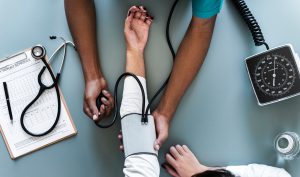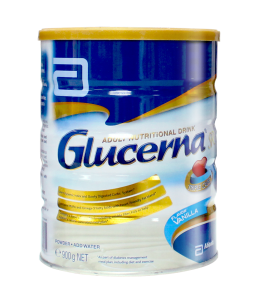Chances are, you’ve heard of or even encountered diabetes. To put it simply, diabetes is a disease that affects your body’s ability to produce or use the hormone insulin, which in turn helps transport energy from the food you eat to your body’s cells. There are two types of this disease: Type 1 diabetes is also called juvenile diabetes and is typically diagnosed during a person’s childhood or adolescence. On the other hand, Type 2 diabetes occurs when the body cannot produce or use enough insulin and is often diagnosed in adults. This type of diabetes is typically diagnosed after the age of 45. However, the number of younger people getting diagnosed with Type 2 diabetes in recent years has been on the rise.
Unfortunately, having no pre-existing condition or family history of diabetes does not guarantee that you won’t get the condition as you age. So the question is, can we actually do anything to minimize our risk for the disease? Perhaps one way to do this is by arming ourselves with the right knowledge on the things to watch out for and what we can actually do to minimize our risk for diabetes.
Here are a few diabetes facts that even non-diabetics should know:

Blood sugar is important.
Blood sugar or blood glucose is the sugar that our bloodstream carries to all of our body’s cells in order to supply energy. The sugar in our blood mostly comes from the food we eat, and it is our body’s responsibility to regulate our blood glucose levels so that it’s neither too high nor too low. The amount of sugar present in our blood at any given time is represented by blood sugar or blood glucose measurements.
Try to keep your blood sugar level low and steady.
Having blood sugar levels that are higher than normal and yet still low enough to not be diagnosed as diabetes is considered “prediabetes,” which can then lead to a higher risk of developing type 2 diabetes. Although blood sugar spikes after big meals can be considered normal, frequent spikes have the tendency to raise your average blood glucose level, also known as A1C. With this in mind, what then is our target blood sugar level? The American Diabetes Association (ADA) has pegged that a fasting glucose level of less than 100mg/dl is normal, with 100 to 125 as prediabetes, and over 125 as diabetes. At the same time, an A1C level of 6.5 percent or higher on two separate occasions can indicate diabetes and a result between 5.7 and 6.4 percent is considered prediabetes.
Not having a sweet tooth does not guarantee low blood sugar levels.
Glucose is considered as the simplest form of energy, and hence, our body converts all the food we eat to glucose in order to utilize it. Carbohydrates are considered to have the highest impact on our blood sugar, as they are the easiest food to convert to glucose. The carbs we eat are broken down into glucose upon digestion, which the cells in our small intestine then absorb, and deliver throughout our body.

Go easy on simple carbs, go heavy on fiber.
Carbohydrates are not the villains, however, it is also advisable to go easy on simple or “refined” carbs such as cakes, pasta, white bread, and other sweets, as a big amount of carbs consumed in one time can have a huge impact on blood sugar levels. Instead of simple carbs, you can incorporate more fiber-rich foods into your diet, such as whole grains, nuts, fruits, legumes, and vegetables. Fiber is considered complex carbs — which means its the zero-calorie, non-digestible part of the carb that bulks up the food and lends a feeling of fullness once eaten.
Glucose is not a bad thing.
Although we have established that high levels of glucose can be a bad thing, we still need it to function. Studies have shown that our brain requires and uses the most energy out of all our organs, and thus, needs the half of our body’s sugar.
What are the symptoms of low blood sugar?
Hypoglycemia or low blood sugar can occur in people who don’t have diabetes, so its best to know its symptoms so we can do something about it ASAP. The symptoms include breaking into a sweat, shaking or feeling shaky, a flushed face, a racing heart, hunger, and even falling unconscious. If you feel any of these symptoms, it’s best to get some sugar into your system, such as by drinking a cup of juice or eating a chocolate bar.
What are the symptoms of high blood sugar?
On the other hand, hyperglycemia or high blood sugar is the other blood sugar extreme and typically occurs when you have a lot of glucose in your bloodstream, which can typically result from the excessive consumption of carbs. Symptoms can include excess thirst, fatigue, and excessive urination. If left untreated, it can even lead to loss of consciousness, coma, and even death — which is the reason why it is best to consume the right amount of carbs per day.

Take steps to manage your blood sugar.
If you have been tested to have high blood sugar or if you have been feeling the symptoms, then its best to make better food and diet choices, no matter how small they may seem. One easy step that can help your blood sugar level is by choosing to replace one snack per day with a glass of Glucerna. Glucerna is a nutritious and healthy drink that includes proteins, vitamins, and minerals that your body needs. It will help you stay full and energized while being low in sugar. Drinking one glass of Glucerna for a month could help you eliminate around 5,670 calories, 1,082 grams of carbs, and 533 grams of sugar.
Busy parents can now easily get their supply of Glucerna anytime, anywhere, thanks to Lazada. Just sign up, log in, and cart your nutritional drink via the Lazada site or Lazada app, and your Glucerna will be delivered straight to your doorsteps.
*All content in this article should be taken as for informational purposes only and should not be considered as medical advice.
Published with Glucerna.
References: National Institute on Aging, Medical News Today, Reader’s Digest, American Diabetes Association, Harvard University’s Neuroscience Institute





